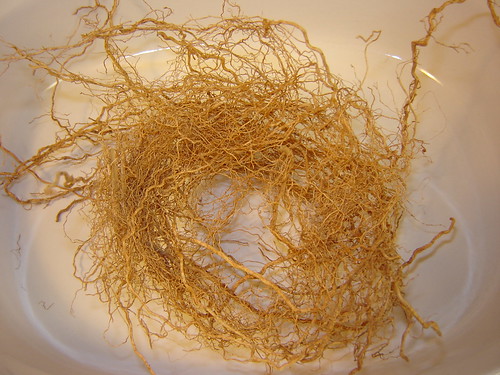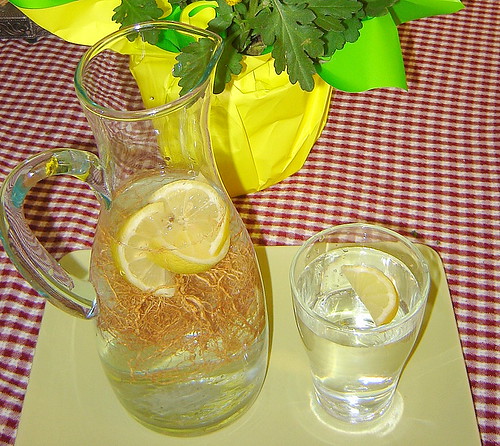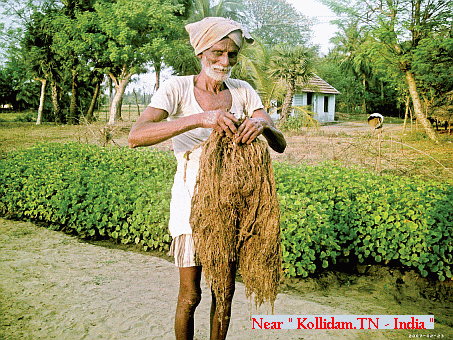Summer is one of the hardest seasons in India. The average temperature has soared up atleast a few degrees Celcius in the past 10 ten years.
Smart ways to handle the heat are the ones that have been laid down by our ancestors. Local ingredients like tender coconut, palm fruits, gingelly oil, pearl onions, ragi porridge, fermented rice porridge has been in vogue to cool the body against the harsh heat.

At our home my father used to get a Kooja, a clay pot with narrow neck to store water. Water stored in clay pots have cooling effects on the body.
He would buy the clay koojas wash them so very well. Then he would pour boiled water to the kooja and add a small bundle of Vetiver root. Vetti means to cut and ver is root in Tamil. Leaving the root bundle in the water for a few hours and the water will get an acquired sweet smell and taste from the vetiver.
Vetiver (Chrysopogon zizanioides) is a perennial grass of the Poaceae native to India."Vetiver" name is native to Tamil language. Old Tamil literature mentions the usage of vetiver for medical purposes. Unlike most grasses which form horizontally spreading mat-like root systems, vetiver's roots grow downward up to 2-4 meters in depth.

Even now in universities and colleges, during summer when examiners are doing paper-correction for the year end finals, you can see halls having big thick vetiver mats on windows. Water will be sprinkled occasionally on these mats. The inside of the room will be very obviously cool and fragrant.
When my father came to visit me a few months ago, he got vetiver for me. A biggg bundle. Last weekend I recreated the vetiver water at home. Cool, crisp tasting with a citrus smell is what I would describe vetiver water as !!
Update: Nannari is a different kind of plant - roots and seeds are used in ayurveda and for preparing Sherbet. It is different from Vettiver. Its commonly called Indian Sarsaparilla (Hemidesmus indicus). More here on Wiki
Another picture of Vettiver from Mr Vasan, who is from Kollidam where Vettiver is grown and harvested.





